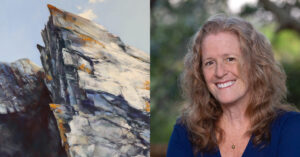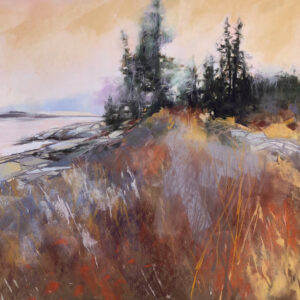Artist Lyn Asselta shared a few words with us about her work. Not only does she create magic with pastels, but she is also pretty amazing with the written word.
My medium of choice, pastel, sometimes seems unusual to anyone not familiar with it, often equating it with “chalk.” But pastel is actually quite different from chalk.
Pure pigment is mixed with a binder and either rolled into stick or block shapes by hand, called soft pastels, or the pigment and binder can be extruded under pressure to create hard pastels, which are of varying thicknesses and hardnesses, both square and round. It is a medium that has a long and enduring history, with the first artists’ pastels being manufactured in the 16th century. Although mistakenly thought to be a somewhat fragile medium, as long as the pigments are pure and of high quality, there will be minimal or no fading of color over time. Pastel paintings from the 1600s are every bit as vibrant now as they were when they were created.
The papers I choose to use for most of my paintings are similar in some ways to sandpaper that one would find at a hardware store, but the materials used to make the papers are acid-free and archival. By using the highest quality materials I can find, my work will stand the test of time as long as it has been properly framed. To avoid accidental damage to the surface of a pastel painting, it must be framed under glass or high-quality acrylic glazing. There are fixatives that can be used to “set” the pastel, but I choose to use them sparingly, only as a means to help add extra layers of color rather than to “fix” the surface of the painting upon completion. The te ure of the paper holds multiple layers of pastel, so there is actually no need for a fixative. Choosing to forego fixative also eliminates the risk of damaging or darkening the colors of the painting.
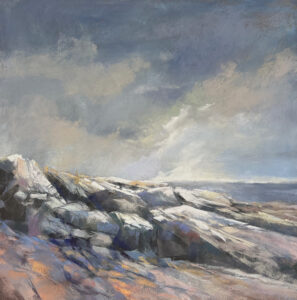
What I love most about pastels is their immediacy. My hands are a direct part of the painting process, and I can choose a color either to use in its pure form or to blend over other colors to create something new. There are no tools involved, just the stick of pigment and my hand. The continuous adjustment of pressure on the stick as I paint allows for myriad textures and marks, creating the unique qualities of this painting process.
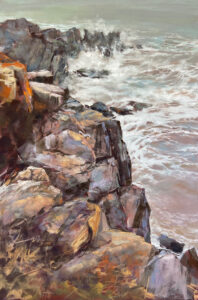
As if painting isn’t enough of a reward in and of itself, just seeing the boxes of pastels laid out in my studio is, for me, a visual treat. Each day, when I step into the studio and remove the covers from my work boxes, I feel almost as though I’m greeting a colorful, eccentric bunch of old friends. In those bo s are the perpetually bright and cheerful colors, the grey and curmudgeonly colors, some colors that are simply serene, some bold, some dark and ominous. Together, they allow me to play and experiment and put my thoughts on paper. They invite us to carry on the legacy of other painters who have turned to pastel: Carriera, de LaTour, Monet, Toulouse-Lautrec, Cassat, Hassam, Degas, Chardin, Redon, and so many others. 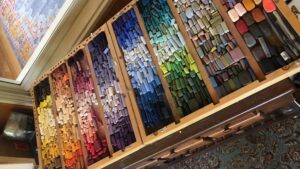
As an artist, I couldn’t ask for better company or for a more expressive medium.
~Lyn Asselta
